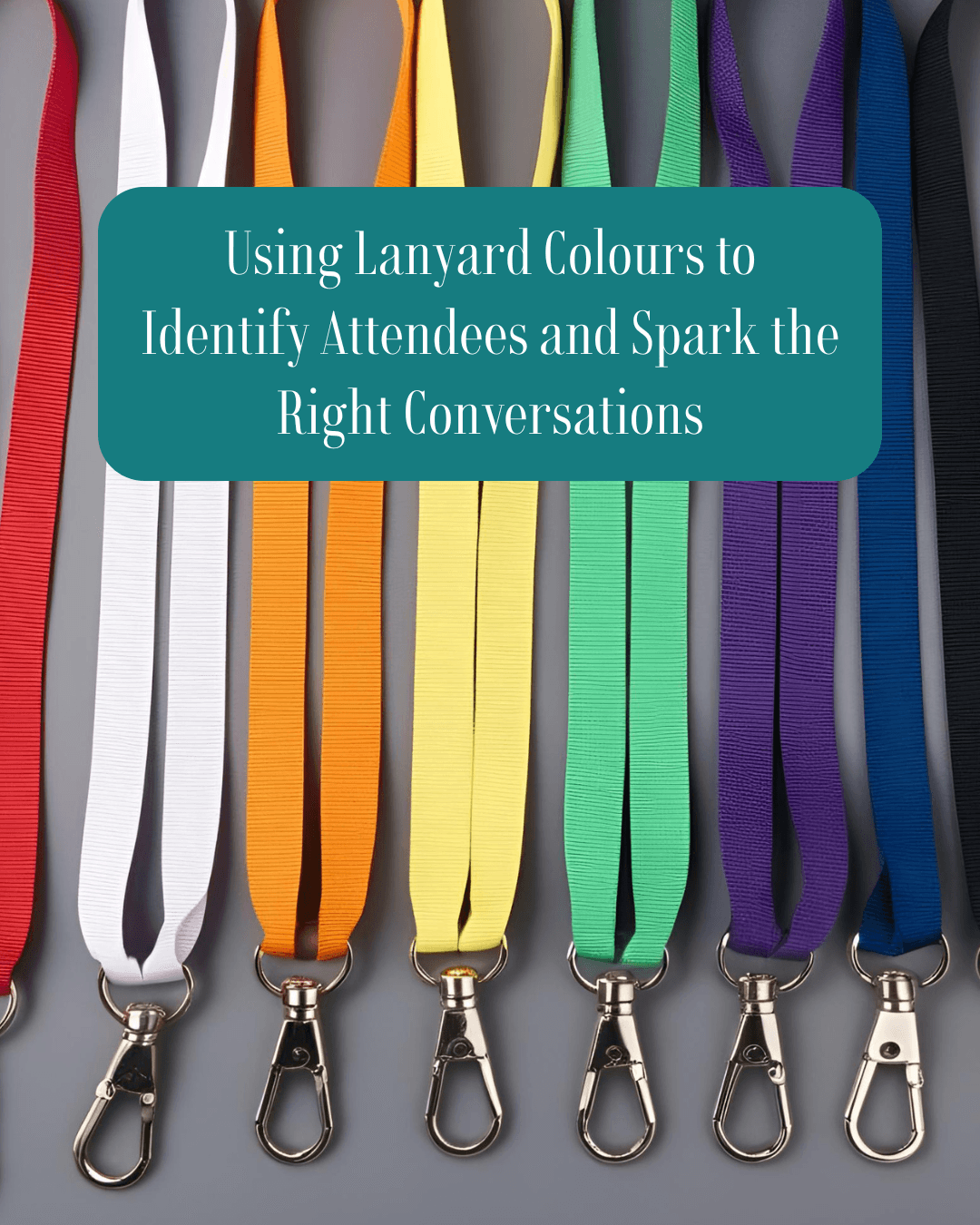Using Lanyard Colours to Identify Attendees and Spark the Right Conversations
If your event's goal is to build connections, drive sales, or match the right people together, then identifying different types of attendees is key. Exhibitors want to spot prospects. Sponsors want to meet clients. Your sales team wants to know who’s who in the crowd. The more easily people can tell what role someone plays, the more successful those conversations will be.
There are a few ways to make attendee types stand out. You can use name badges with different colours. You can add bold labels like ATTENDEE, SPEAKER, or EXHIBITOR along the bottom of the badge. Or you can attach a ribbon that flags the person’s role. All of these work well.


But one of our clients recently tried something a bit different—and it worked even better than expected: they used lanyard colours.
Here’s what they did:
- Green lanyards for staff
- Yellow for partners
- Blue for current clients
- Orange for prospects
At first, I had concerns—especially with calling out prospects so directly. I worried it might make them feel uncomfortable. And sure enough, during registration, some attendees asked for specific lanyard colours or wanted to know why they’d received one over another.
But the client had someone from their team at the registration desk who handled it perfectly. When a prospect asked why they’d been given an orange lanyard, the staff member explained, “It’s because you haven’t used our system before. Those with green lanyards are current clients, and the blue lanyards are our staff—so if you have questions or want to hear more about how it works, just look for someone with green or blue.”
It turned what could’ve been an awkward moment into a chance to open a conversation.
That’s the point. The better you are at identifying your attendees, the easier it is for people to make the right connections. And if the goal of your event is sales, partnerships, or building relationships, then it’s not just helpful—it’s essential.
Make it easy. Make it clear. Make people stand out.
